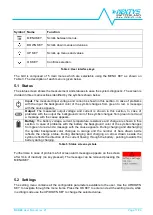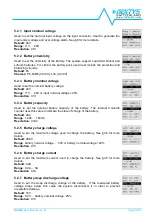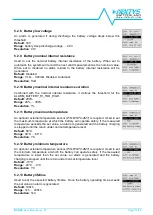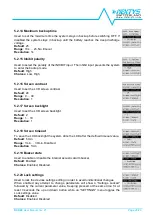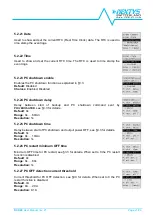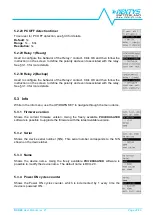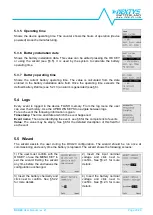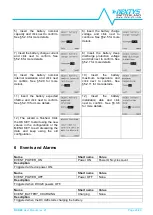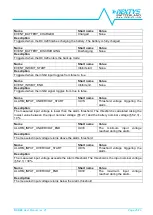
DCU20
User Manual rev. 21
Page 10/29
lower than Ioff current threshold for T4 time. As a consequence
DCU20 generates an ON->OFF->ON cycle on its output.
T1
PC shutdown delay
User settable (§5.2.24). Time between start of backup and start of
PC shutdown procedure.
T2
PC shutdown time
User settable (§5.2.25). Time between start of shutdown
procedure and output voltage OFF. This time must be set longer
than the maximum time the PC takes to complete the shutdown.
T3
PC restart minimum
OFF
time
User settable (§5.2.26). T3 is the delay used between the return
of the input voltage and the activation of the output. The same
time is used by the automatic restart function as power OFF time
to restart the PC. The value must be big enough for the PC to
detect the supply ON->OFF->ON cycle to restart.
T4
PC
OFF
detection
timer
User settable (§5.2.28). Minimum time at which the output current
must be below the Ioff current threshold to trigger the automatic
PC restart (PC supply ON->OFF->ON cycle).
Ioff
PC
OFF
detection
current threshold
User settable (§5.2.27). Current threshold used to detect PC OFF
status. This value must be lower than the minimum PC current
consumption when this is ON.
Table 2: Shutdown and restart
The parameters are settable through the DCU20 LCD or using the
POWERMASTER
application as
shown on the image below. The checkbox
“Run on startup” must be checked on
POWERMASTER
when PC shutdown function is used
, select “Start in tray” to start in minimized into the windows
system tray.
To inhibit the software from calling the shutdown command user can select the “Inhibit
shutdown” check box.
Figure 6: PC shutdown settings
3.4 Battery health monitor
The battery health monitor is composed of:
Internal resistance (Ri) measurement
: The resistance is periodically measured. The
internal resistance is a good indicator of the battery health status; a sudden increase of the
internal resistance indicates a potential problem on the battery or on the battery wiring (see
§3.5).

















